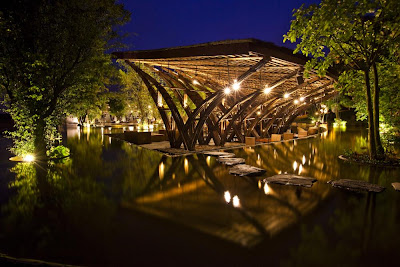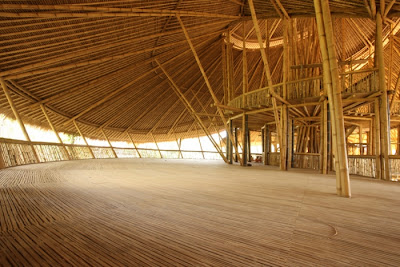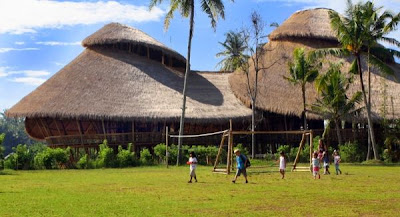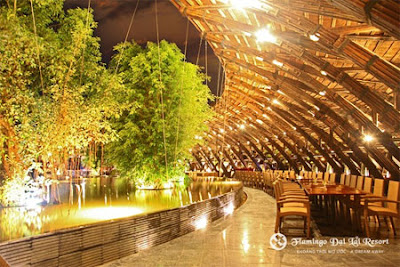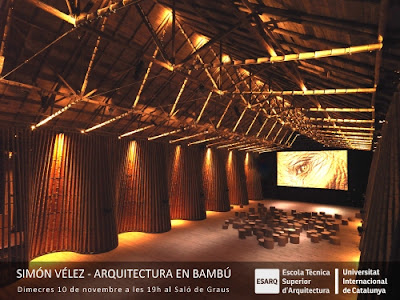In addition to its
green benefits, bamboo processing procedures are fairly environmental friendly since
the beginning. Accounting for jungle deforestation alone, the United Nations (UN)
has announced in 2006 that it is responsible for 2.2 billion tons of carbon dioxide
released yearly (Benjami, 2010). Looking into Malaysia, timber harvesting has
always been a threat to the island of Borneo. It is hard to swallow the fact
that our deforestation rate is three times faster than the rest of Asia
combined (Max, 2011). This situation calls for a quick fix. According to professor
of ecology Manuel Ruiz-Perez, except when replacing natural forests or very old
plantations, bamboo actually comes with positive environmental balance. The
gist is that bamboo matures and regenerates quickly unlike any typical tree. Therefore
harvesting it can barely damage the environment. During the starch removal treatment,
bamboo is smoked (see Image 3.9) without involving chemicals. Furthermore, the decay
protection requires only soaking in boric salts (see Image 3.10), which again isn’t
hazardous whatsoever. Malaysia is blessed with heavy rainfall and abundance of
sunlight throughout the year, there is close to no doubt that bamboo can
flourish easily. If it is planted locally, there will be no carbon footprint
from shipment and preservatives, a key consideration when one speaks of green. To
make things happen, the public has to first acknowldge, which subsequently
leads to the surge in commercial value. Ultimately, farmers and developers will
invest because it’s profitable. By virtue of its low heat retention, a bamboo
building saves a lot on cooling throughout its operating life. After all said
and done, it is clearly environmentally responsible to the end of its life
cycle.
Image 3.9
Smoking Bamboo
Image 3.10
Bamboo in Boric Salts
In at least one
case, that of Green School (see Image 3.11, Image 3.12 and Image 3.13) in Bali,
Indonesia, bamboo’s scientific advantages were exploited to their limits. As
the name suggests, the award winning school educates students about
environmental practices, renewable energy, and organic farming aside from the
normal school syllabus. With no walls, the building relies completely on
natural resources namely sunlight and breeze, in other words it is sustainable
to the very detail. Regardless of that, bamboo was employed as the primary
building material for the 7785 sq m big architecture, demonstrating bamboo’s remarkable
construction strength. Perhaps the public is more easily convinced with a
living model, there is a saying that goes “seeing is believing”. Apart from
that, the school was constructed solely by Indonesian empirical builders. Elora
Hardy, the architect behind, was fully aware of the locals’ bamboo expertise
and thence made use of it. The strategy sets a good lesson for Malaysians,
utilizing a material the local builders are familiar with, creating job
opportunities while keeping bamboo architecture in Malaysia alive.
Image 3.11
Green School, Bali
Image 3.12
Interior View of Green School
Image 3.13
Interior View of Green School
-Incomplete-
5.0 Nourishing
an Architectural Identity
When Malaysia
declared her independence in 1957, nearly all architects were educated abroad.
They believe local employers would better recognize their qualifications
considering the standard and quality of Western education back then. However, there
was a price to pay. Theories by iconic architects like Ludwig Mies van der Rohe
and Frank Lloyd Wright were used as the basis of teaching therefore their works
naturally became reference as the favourable trend of the time. When these
graduates return, they spread the Western based Minimalist Style throughout the
nation. Coincidentally during the same period of time, Malaysia was at her peak
of economic and population growth. The restless need to keep up with it didn’t
give architects the profusion of time to experiment architectures. Therefore,
the foreign architecture style was employed all along, even today (see Image
5.1).
Image 5.1
Western Concept Housing in Malaysia
For the past fifty
years, Mies’ Seagram Building (see Image 5.2) became the most commonly imitated
building in the history of architecture. It has received much attention in the
press, not all of it favourable, and it remains a prime object of architectural
pilgrimage whether by students or practising architects. Even in Malaysia, poor
imitations by architects with shallow comprehension have littered our cities. Is
this repeated use of curtain wall sufficient to articulate the rich and diverse
content of our nation?
Image 5.2
Seagram Building




















